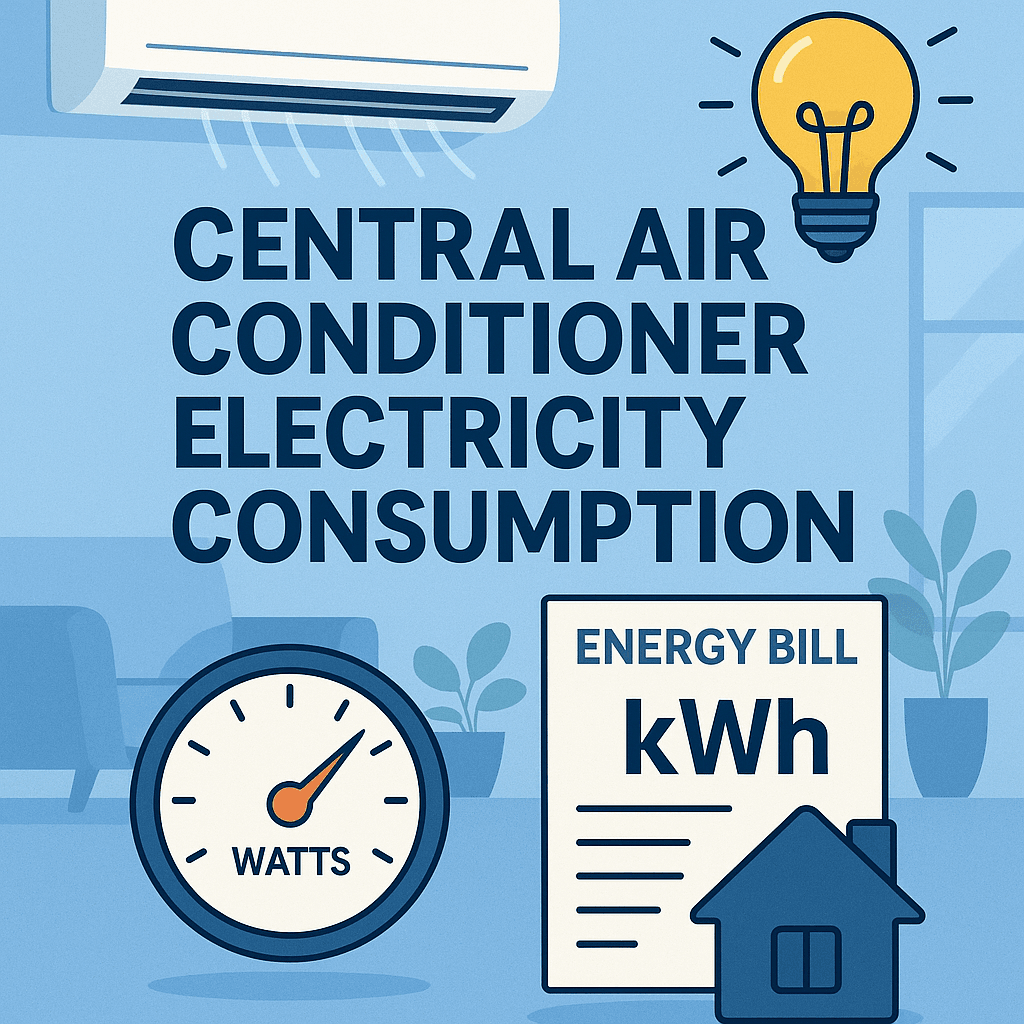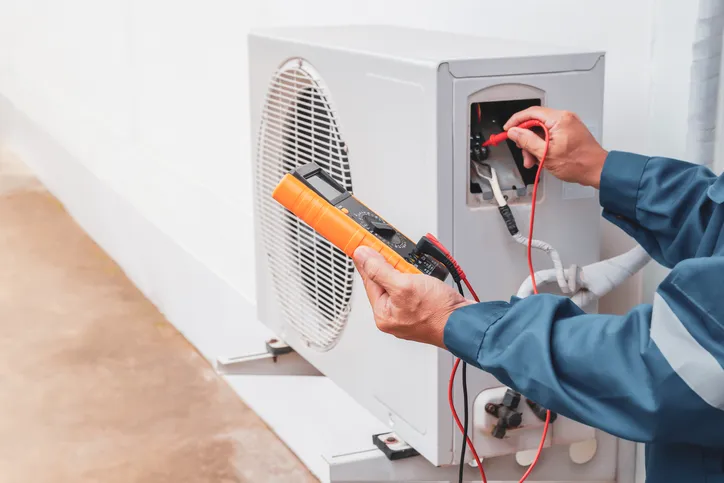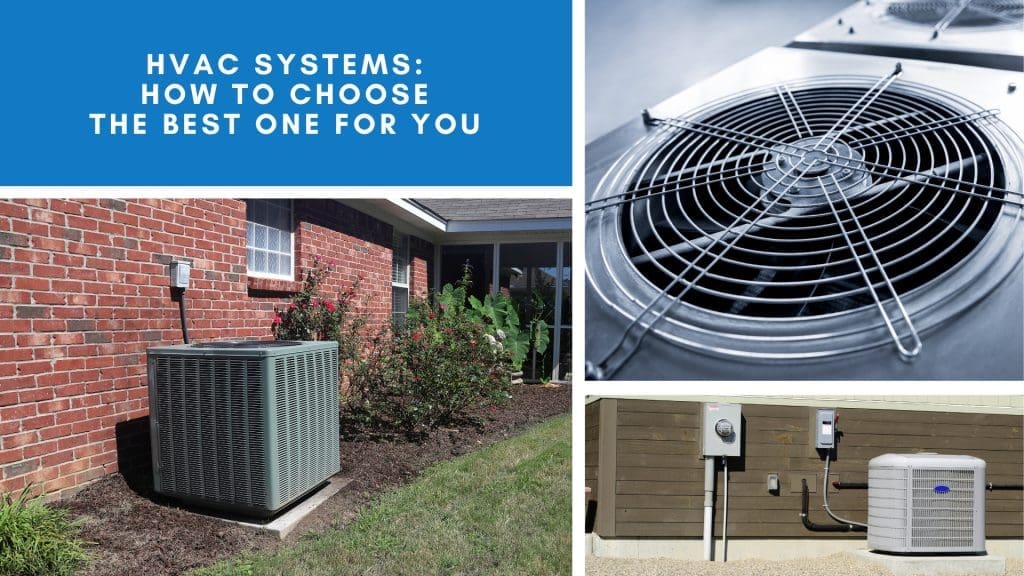A medida que sube el mercurio, también lo hace nuestra dependencia de aire acondicionadoPero ¿te has parado alguna vez a pensar en el consumo energético de tu aire acondicionado central?
Entendiendo tu Climatización El uso de la energía es crucial. No solo te ayuda a gestionar tus facturas de electricidad, sino que también contribuye a un medio ambiente más sostenible.
En esta guía, profundizaremos en los detalles del consumo eléctrico del aire acondicionado central. Exploraremos cuántos vatios consume un aparato típico. C.A. usos de la unidad y cómo esto se traduce en kilovatios-hora en su factura de energía.

También discutiremos los factores que pueden afectar su C.A.Consumo energético. Además, te daremos consejos para reducir tu consumo sin comprometer tu comodidad.
Entonces, ya sea que usted sea propietario de una pequeña empresa, un profesional que trabaja desde casa o un padre o madre ocupado que se queda en casa, esta guía es para usted.
Conceptos básicos del consumo eléctrico del aire acondicionado central
Los aires acondicionados centrales son esenciales para mantener un ambiente interior confortable, especialmente durante las temporadas de calor. Sin embargo, también son uno de los mayores consumidores de electricidad en el hogar.
Por lo general, una central C.A. Cada unidad consume entre 3000 y 5000 vatios de potencia por hora. Esto puede variar según factores como el tamaño de la unidad y su índice de eficiencia, también conocido como SEER (Índice de Eficiencia Energética Estacional).
El consumo de energía de su aire acondicionado se refleja en su factura mensual de electricidad. Es importante comprender estas cifras para gestionar su consumo energético de forma más eficaz.
Al saber cuánta energía consumes C.A. Consume, puede identificar oportunidades para ahorrar energía y dinero. Profundicemos en el conocimiento de los vatios que consume su aire acondicionado central.
¿Cuántos vatios utiliza un aire acondicionado central?
La potencia de un aire acondicionado central es un indicador clave de su consumo de energía. En promedio, los sistemas de aire acondicionado central... C.A. Las unidades consumen entre 3.000 y 5.000 vatios por hora, dependiendo de su tamaño y eficiencia.
Al considerar la potencia, es importante recordar que los modelos más nuevos y de bajo consumo suelen consumir menos electricidad que las unidades más antiguas. Estos modelos pueden ofrecer la misma comodidad de refrigeración con un menor consumo de energía.
A continuación se muestra un desglose básico de lo que contribuye al vataje:
- Tamaño de la unidad:Las unidades más grandes generalmente utilizan más vatios.
- Clasificación de eficiencia:Las calificaciones SEER más altas significan una mejor eficiencia.
- Tiempo de ejecución:Más horas de funcionamiento incrementan el consumo de potencia.
Comprender el vataje le ayudará a estimar su consumo de energía y controlar sus gastos.
Comprensión de los kilovatios y los kilovatios-hora en el uso de CA
Para comprender tu C.A.Para el consumo de energía, es necesario comprender los kilovatios (kW) y los kilovatios-hora (kWh). Estas unidades miden el consumo de electricidad y son cruciales para calcular los costos.
Un kilovatio equivale a 1000 vatios. Los aires acondicionados centrales suelen consumir varios kilovatios por hora, según sus especificaciones. Al multiplicar la cantidad de kilovatios por las horas de funcionamiento diarias, se obtienen kilovatios-hora (kWh).
Esta cifra de kWh es la que aparece en su factura de electricidad. Cada kWh refleja la energía total utilizada por su... C.A., proporcionando una imagen clara de su impacto energético.
Al comprender estos conceptos, podrá gestionar mejor el funcionamiento de su aire acondicionado. Este conocimiento es esencial para tomar decisiones informadas sobre el uso y la mejora de la eficiencia.
Factores que afectan el consumo de electricidad de CA
El consumo eléctrico de su aire acondicionado central se ve afectado por varios factores. Reconocer estos elementos puede ayudarle a gestionar y, potencialmente, reducir el consumo energético.
El tamaño de su unidad de aire acondicionado influye directamente en su consumo de energía. Las unidades más grandes suelen consumir más electricidad, mientras que las unidades de tamaño adecuado proporcionan una refrigeración eficiente sin un consumo excesivo.
La eficiencia es otro factor crucial. Las unidades con índices SEER más altos ofrecen un mayor ahorro de energía. Este índice refleja el rendimiento estacional, así que elija con cuidado para obtener beneficios a largo plazo.
Más allá de la unidad en sí, las características térmicas de su hogar influyen. Las viviendas mal aisladas requieren más energía para mantener el confort, lo que aumenta el consumo.
Finalmente, las condiciones climáticas externas, como las fluctuaciones de temperatura y los niveles de humedad, afectan el rendimiento del aire acondicionado. Los días calurosos y húmedos requieren más refrigeración, lo que se traduce en un mayor consumo de electricidad.
Tamaño y eficiencia: clasificaciones SEER y tonelaje
Al seleccionar una unidad de aire acondicionado, tanto el tamaño como la eficiencia son factores cruciales. El tamaño, o tonelaje, debe ajustarse a las necesidades de refrigeración de su espacio. Una unidad demasiado grande puede desperdiciar energía, mientras que una demasiado pequeña puede sobrecargarse.
La eficiencia se mide por la Clasificación SEERUna clasificación SEER más alta implica mayor eficiencia y menores facturas de energía. Este número refleja la potencia de refrigeración dividida entre la energía consumida durante una temporada típica de refrigeración.
Elegir una unidad del tamaño adecuado y con una alta clasificación SEER garantiza un rendimiento óptimo. Reduce el consumo de energía, reduce los costos y mejora el confort interior. Este equilibrio es clave para mantener la eficiencia energética en su hogar.
Clima y temperatura exterior
El clima y la temperatura exterior influyen significativamente en la carga de trabajo de su aire acondicionado. Los climas cálidos requieren un uso más frecuente y prolongado del aire acondicionado, lo que incrementa el consumo de energía.
En las regiones más cálidas, los aires acondicionados necesitan funcionar durante más tiempo para mantener el confort, especialmente durante las horas punta. Esto conlleva un mayor consumo de electricidad.
Por el contrario, los climas más fríos exigen menos aire acondicionadoReducir el consumo de energía. Comprender el clima local ayuda a elegir el sistema de aire acondicionado adecuado y a gestionar su uso eficazmente.
Aislamiento y conductos para el hogar
La calidad del aislamiento de su hogar puede afectar significativamente la eficiencia energética de su aire acondicionado. Un buen aislamiento minimiza el intercambio de calor, manteniendo el aire frío dentro y el aire caliente fuera.
Un aislamiento inadecuado obliga al aire acondicionado a trabajar más, lo que aumenta el consumo de energía. Un aislamiento adecuado reduce esta carga adicional, ahorrando electricidad y mejorando el confort.
Además, el estado de los conductos es crucial. Los conductos con fugas pueden provocar pérdidas de energía considerables. El sellado y el mantenimiento de los conductos garantizan un flujo de aire eficiente, reduciendo así el consumo total de energía para la refrigeración.
Implicaciones de costo de operar su aire acondicionado central
El uso de una unidad de aire acondicionado central puede afectar significativamente sus facturas de servicios públicos, especialmente durante los meses de mayor demanda de refrigeración. Comprender estos costos es crucial para una presupuestación eficaz.
La electricidad que consume su aire acondicionado determina en gran medida sus gastos mensuales de energía. Los equipos más grandes o antiguos suelen consumir más energía, lo que se traduce en costos más altos.
Además, las tarifas eléctricas locales pueden afectar el gasto total. Conocer su tarifa puede ayudarle a prever las facturas y gestionar estrategias de refrigeración. Monitorear los patrones de consumo ayuda a identificar oportunidades de ahorro, garantizando que su comodidad no le cueste un ojo de la cara.

Cómo estimar sus costos mensuales de energía del aire acondicionado
Calcular el costo mensual de energía de su aire acondicionado implica realizar algunos cálculos. Comience por determinar la potencia de su unidad, que generalmente se encuentra en la etiqueta o en el manual del usuario.
Multiplique esta potencia por el número de horas que la unidad funciona diariamente. Luego, divida entre 1000 para convertir los vatios a kilovatios-hora (kWh), la unidad de facturación estándar.
Finalmente, multiplique los kWh por su tarifa eléctrica local. Esto le dará una estimación aproximada de sus costos mensuales de aire acondicionado. Comprender estas cifras le permitirá tomar decisiones informadas sobre el uso y las mejoras de eficiencia.
Cómo reducir el consumo de energía de su aire acondicionado central
Reducir el consumo de energía no solo reduce costos, sino que también prolonga la vida útil de su aire acondicionado. Aquí tiene algunas estrategias efectivas que puede considerar.
- Mantenimiento regular:Programe puestas a punto profesionales y limpie o reemplace los filtros con frecuencia.
- Termostatos programables:Establezca temperaturas más altas cuando la casa esté desocupada.
- Mejorar el aislamiento:Aísle adecuadamente su casa, incluso sellando ventanas y puertas.
- Utilice ventiladores de techo:Ayudan a distribuir el aire frío, lo que permite configuraciones más altas del termostato.
- Tecnología de hogar inteligente:Utilice controladores de CA inteligentes para patrones de uso optimizados.
- Uso de cortinas y persianas:Bloquee la luz solar directa para reducir la absorción de calor.
- Momento:Evite el uso intensivo del aire acondicionado durante los períodos de máxima demanda de electricidad.
- Actualice su unidad:Considere modelos SEER altos para una mejor eficiencia.
Practicar estas medidas puede generar ahorros energéticos sustanciales, manteniendo el confort. Involucrar a toda la familia en hábitos de eficiencia energética también maximiza estos beneficios.
Opciones de refrigeración alternativas y su uso energético
Cuando el aire acondicionado central no es viable, puede ser conveniente explorar otras opciones de refrigeración. Estas alternativas suelen ofrecer soluciones flexibles con menores costos de energía.
Cada opción varía en consumo energético y eficiencia. Es fundamental comprender estas diferencias para equilibrar la comodidad con la eficiencia y garantizar que sus necesidades de refrigeración se satisfagan de forma asequible y sostenible.
Unidades de aire acondicionado de ventana y portátiles
Los aires acondicionados de ventana y portátiles proporcionan refrigeración localizada y suelen ser más económicos. Consumen menos energía que los sistemas de aire acondicionado centrales, lo que los convierte en una opción ideal para espacios pequeños o necesidades a corto plazo.
Sin embargo, su eficiencia puede verse limitada por el tamaño y la ubicación de la habitación. Si bien son convenientes, es necesario considerar cuidadosamente su impacto en la factura de energía y el nivel de comodidad para un uso óptimo.
Ventiladores, enfriadores evaporativos y otros métodos
Los ventiladores y enfriadores evaporativos ofrecen maneras económicas de mantenerse fresco. Los ventiladores hacen circular el aire, haciendo que los ambientes se sientan más frescos sin bajar la temperatura y con un consumo mínimo de electricidad.
Los enfriadores evaporativos, adecuados para climas secos, aportan humedad a la vez que enfrían el aire. Estos métodos, junto con otros como las cortinas térmicas, ofrecen alternativas viables que mejoran el confort y minimizan el consumo de energía.
Cómo tomar decisiones inteligentes para su hogar o negocio
Elegir la opción de refrigeración adecuada implica comprender sus necesidades específicas y sus objetivos energéticos. Esto requiere un enfoque cuidadoso, considerando factores como el espacio, el presupuesto y el clima.
Explorar diferentes tecnologías y consultar con expertos puede ayudarle a encontrar soluciones eficaces de ahorro energético. Tomar decisiones informadas puede mejorar la comodidad y mantener los costos de energía bajo control.
Cómo seleccionar la unidad de aire acondicionado adecuada
Elegir un aire acondicionado no se trata solo de potencia, sino también de ajuste y eficiencia. Considere el tamaño de su espacio y sus necesidades de refrigeración para evitar comprar de más.
Busque unidades con una alta calificación SEER y certificación Energy Star para ahorrar energía. Elegir la unidad adecuada garantiza comodidad sin gastos innecesarios de electricidad.
El papel de los servicios profesionales de HVAC
Profesional Climatización Los servicios son esenciales para optimizar su sistema de refrigeración. Una instalación y un mantenimiento adecuados por parte de expertos mejoran la eficiencia y la durabilidad.
Confíe en profesionales para revisiones periódicas, mejoras del sistema y asesoramiento. Su experiencia garantiza el correcto funcionamiento de su sistema, ahorrándole costosos desperdicios de energía y reparaciones.

Conclusión: Cómo equilibrar el uso de energía de HVAC para la comodidad y el costo
Encontrar el equilibrio perfecto entre comodidad y costo implica prestar atención al consumo de energía y tomar decisiones inteligentes. Al comprender sus necesidades de refrigeración y adoptar prácticas eficientes, podrá disfrutar de un ambiente confortable y, al mismo tiempo, controlar sus gastos de energía. Priorice la eficiencia para disfrutar del ahorro y la sostenibilidad.


